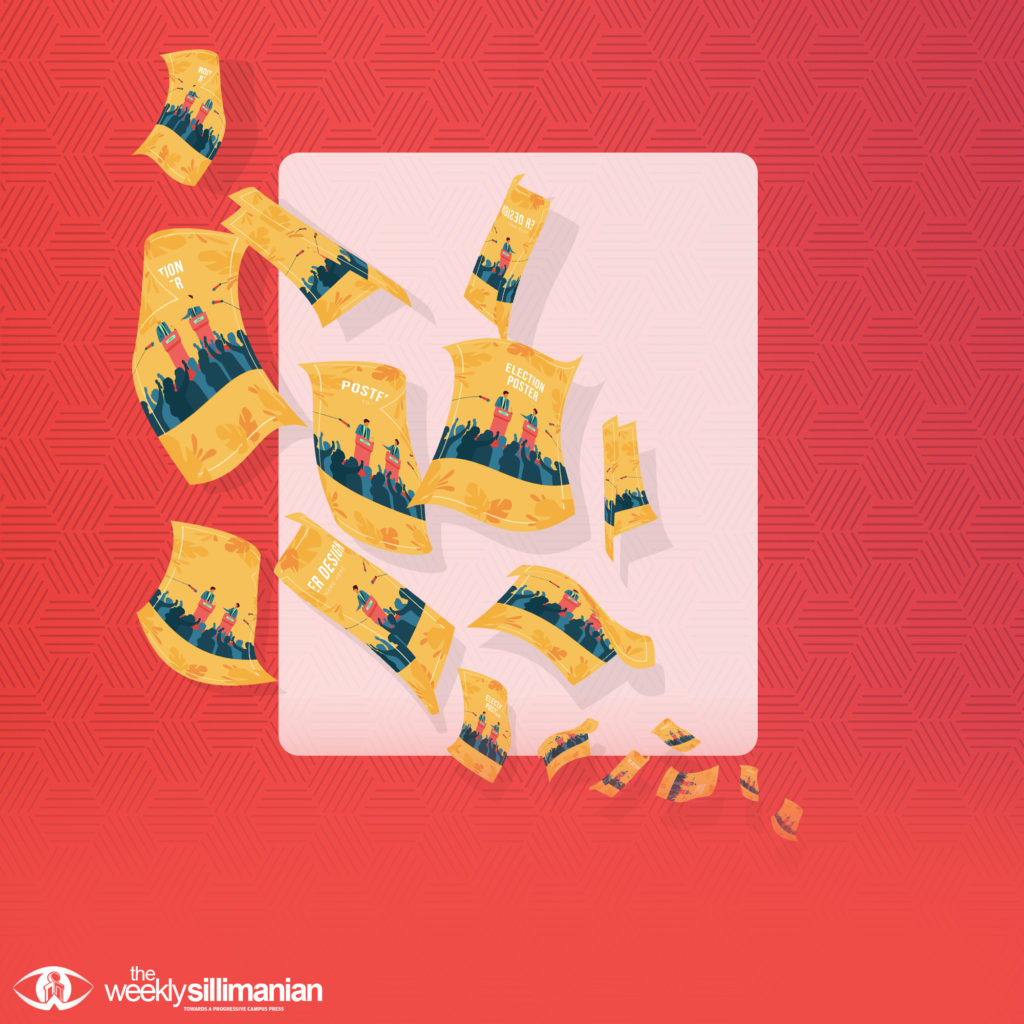by Zarelle Glen Dorothy A. Villanzana | December 1, 2021
Bright and cheerful faces light up on the streets, each of them waving the names of whom they deem to be capable of leading the country and amplifying their voices. Walls, alleys, and even trees are filled with posters and tarpaulins, banners draping from the edge of rooftops as if to pair with the festive Christmas decorations. Every person roots for the best set of candidates at least in their perspective, wearing and flaunting their merchandise as a gesture of their support.
But when it comes down to the nit and grit, how often are these candidates concerned about what they leave behind, even before they achieve the seat? Just as they continue to campaign for all the services they promise, could it not be possible to campaign for the environment too?

“The mass production of tarpaulin, banners, and posters for the midterm election campaign will surely add to the plastic pollution that our country is wrestling with,” Thony Dizon, a chemical safety campaigner from EcoWaste Coalition stated back in 2019, “It is not a simple solid waste issue as these popular campaign materials are laden with toxic chemicals such as cadmium.”
Cadmium is listed among the ten chemicals of major public concern. It is a heavy metal used as a plastic colorant, mostly found in tarpaulins, which as told by WHO, exerts toxic effects on the renal, skeletal and respiratory systems. The production of this harmful element is increasing because of the rampant use of campaign materials containing these components. Political dramas are always the highlight during the election season, but the real horror is often overlooked. After the campaign period, keeping the environment free from toxic waste is as uncertain as politics itself, filled with promises that may not be upheld. As long as we stay idle with this issue, we are increasing the probability of a more harmful reprise brought by our unsustainable practice.
Since products containing cadmium won’t be collected separately, tarpaulins would end up buried in landfills where materials break down and release their toxic chemicals onto the ground and into the atmosphere. This impacts plants greatly as it reduces their water and nutrient uptakes. It inhibits plant growth, which in turn, reduces crop yield, which in turn, will affect the food supply for both animals and humans. That is why EcoWaste Coalition had urged the Department of Environment and Natural Resources (DENR) for the approval of a strong Chemical Control Order (CCO) to limit and regulate the use of cadmium.
Environmental groups have also rallied to push for green reforms before the 2022 elections. One of the problems stated was the open burning of campaign waste materials, as it disregards the Clean Air Act and the Ecological Solid Waste Management Act.
As the country gets closer to election season, what other image could be seen if not a wide array of colors from tarps and posters expressing their preference as to who deserves the seat? Will all these colors still be looking as vibrant as they are after the toxic wastes have seeped into our environment?
Sustainability should always be a paramount concept. Once the campaign period is over, let us take responsibility for our waste. Upcycling would be a good example as shown by an initiative from Quezon City wherein they turned tarpaulins and posters into bean bags and chairs.
Be sure to not only campaign for your chosen candidates, but also for the security and prosperity of the environment. After all, no matter which color we belong in the political scheme of things, at the end of the day, we all still belong to the same four colors that represent our nation.


